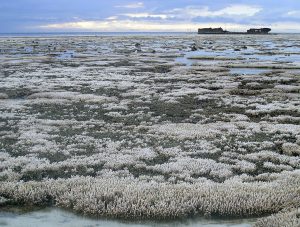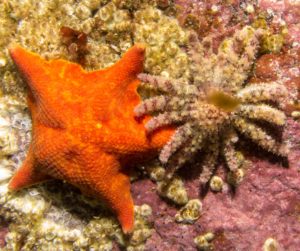Marine Protected Areas Threatened by Ocean Warming
The species that currently inhabit Marine Protected Areas will be unable to tolerate the rising ocean temperatures that climate change will bring, according to new research.
 Image: By Brocken Inaglory. [CC BY-SA 3.0 (https://creativecommons.org/licenses/by-sa/3.0)]
Image: By Brocken Inaglory. [CC BY-SA 3.0 (https://creativecommons.org/licenses/by-sa/3.0)] New research has found that most marine life in Marine Protected Areas will not be able to tolerate warming ocean temperatures caused by greenhouse gas emissions.
There are 8,236 Marine Protected Areas (MPAs) around the world, although they only cover about 4% of the surface of the ocean. MPAs include marine reserves, fully protected marine areas, no-take zones, marine sanctuaries, ocean sanctuaries, marine parks, and locally managed marine areas, to name just a few. Many of these have quite different levels of protection, and the range of activities allowed or prohibited within their boundaries varies considerably too. They have been established as a haven to protect threatened marine life, like polar bears, penguins and coral reefs, from the effects of fishing and other activities such as mineral and oil extraction.
However, with continued “business-as-usual” emissions, the protections currently in place won’t matter. By 2100, warming and reduced oxygen concentration will make MPAs uninhabitable for most species currently residing in those areas.
The study, published in Nature Climate Change, predicts that under the Intergovernmental Panel on Climate Change’s Representative Concentration Pathway 8.5 emissions scenario, better known as the “business as usual scenario,” MPAs will warm by 2.8oC by 2100. Per year, mean sea-surface temperatures within MPAs are projected to increase 0.034oC.
Such rapid and extreme warming would devastate the species and ecosystems currently located in MPAs. This could lead to extinctions of some of the world’s most unique animals, loss of biodiversity, and changes in ocean food-webs. It could also have considerable negative impacts on the productivity of fisheries and on tourism revenue. Many of these marine species exist as small populations with low genetic diversity that are vulnerable to environmental change and unlikely to adapt to ocean warming.
The Marine Protected Areas at the greatest risk include those in the Arctic and Antarctic (which are projected to warm especially quickly), in the northwest Atlantic, and the newly designated no-take reserves off the northern Galápagos Islands, Darwin and Wolf.
The study also estimated the year in which MPAs in different ecoregions would cross critical thresholds beyond which most species wouldn’t be able to tolerate the change. For many areas in the tropics, this will happen as soon as the mid-21st Century.
“With warming of this magnitude, we expect to lose many, if not most, animal species from Marine Protected Areas by the turn of the century,” said lead author John Bruno, a marine ecologist. “To avoid the worst outcomes, we need to immediately adopt an emission reduction scenario in which emissions peak within the next two decades and then decrease very significantly, replacing fossil fuels with cleaner energy sources like solar and wind.”
Rich Aronson, ocean scientist at Florida Institute of Technology and a researcher on the study, says: “There has been a lot of talk about establishing marine reserves to buy time while we figure out how to confront climate change. We’re out of time, and the fact is we already know what to do: We have to control greenhouse gas emissions.”





No comments yet.